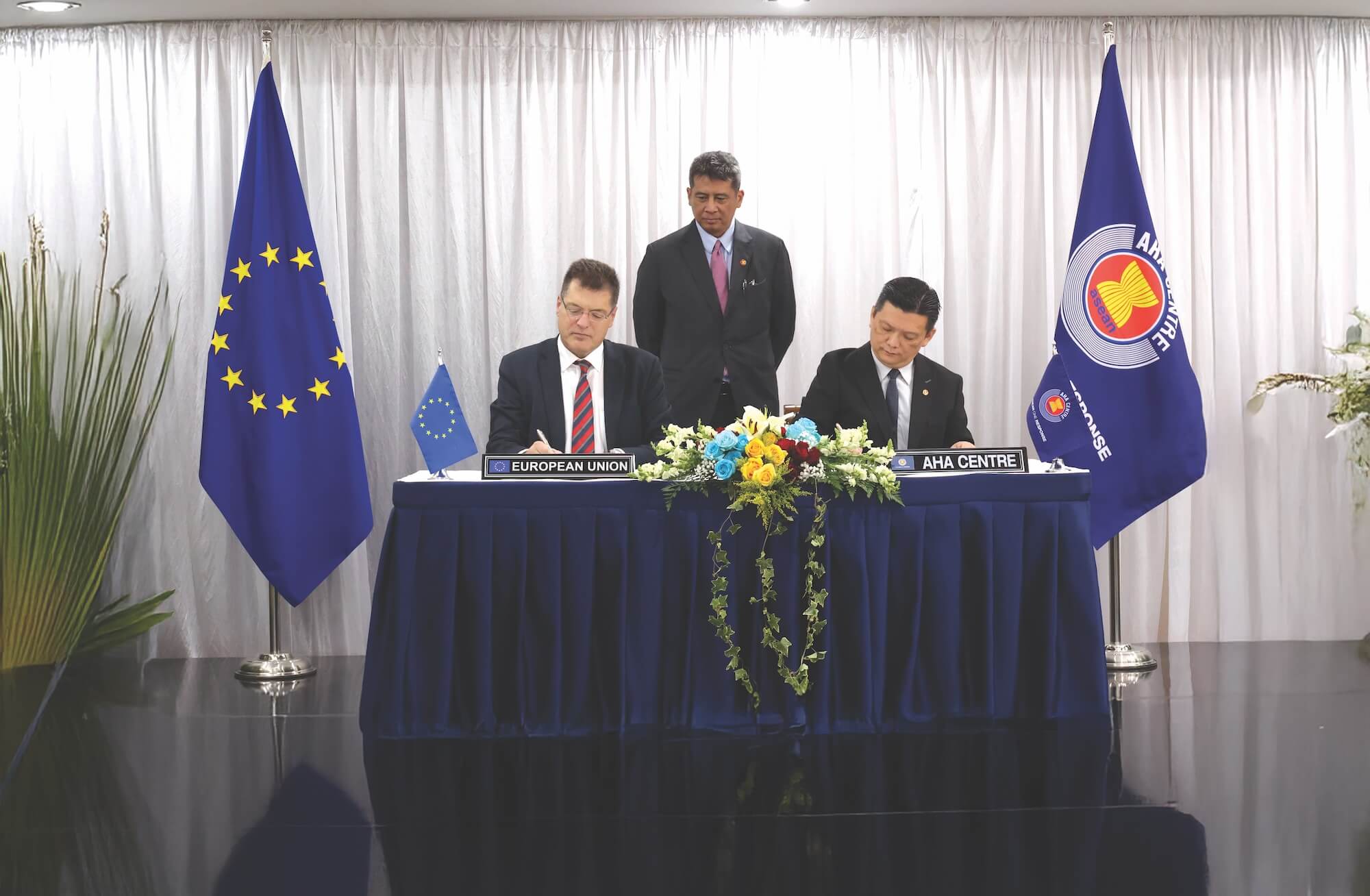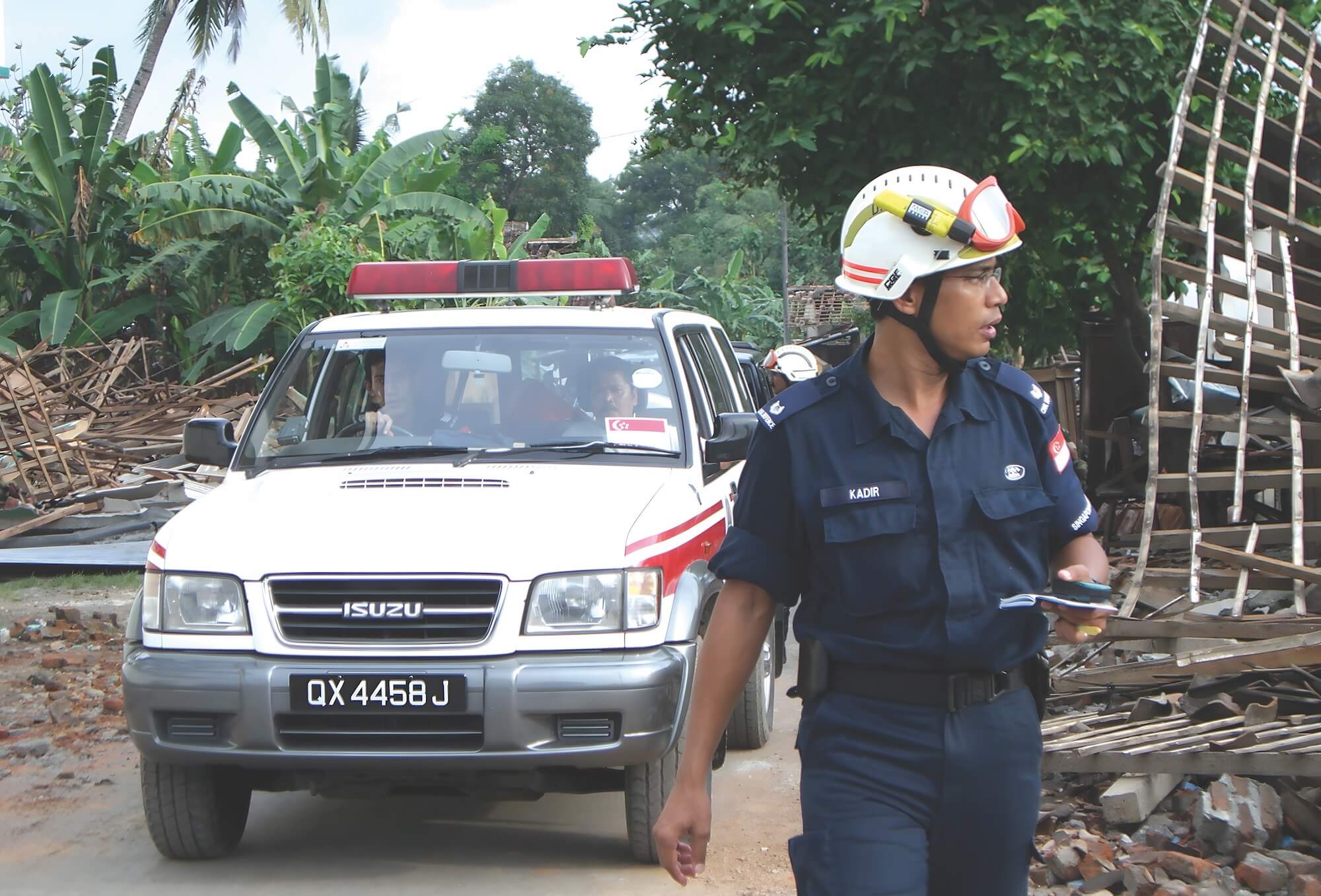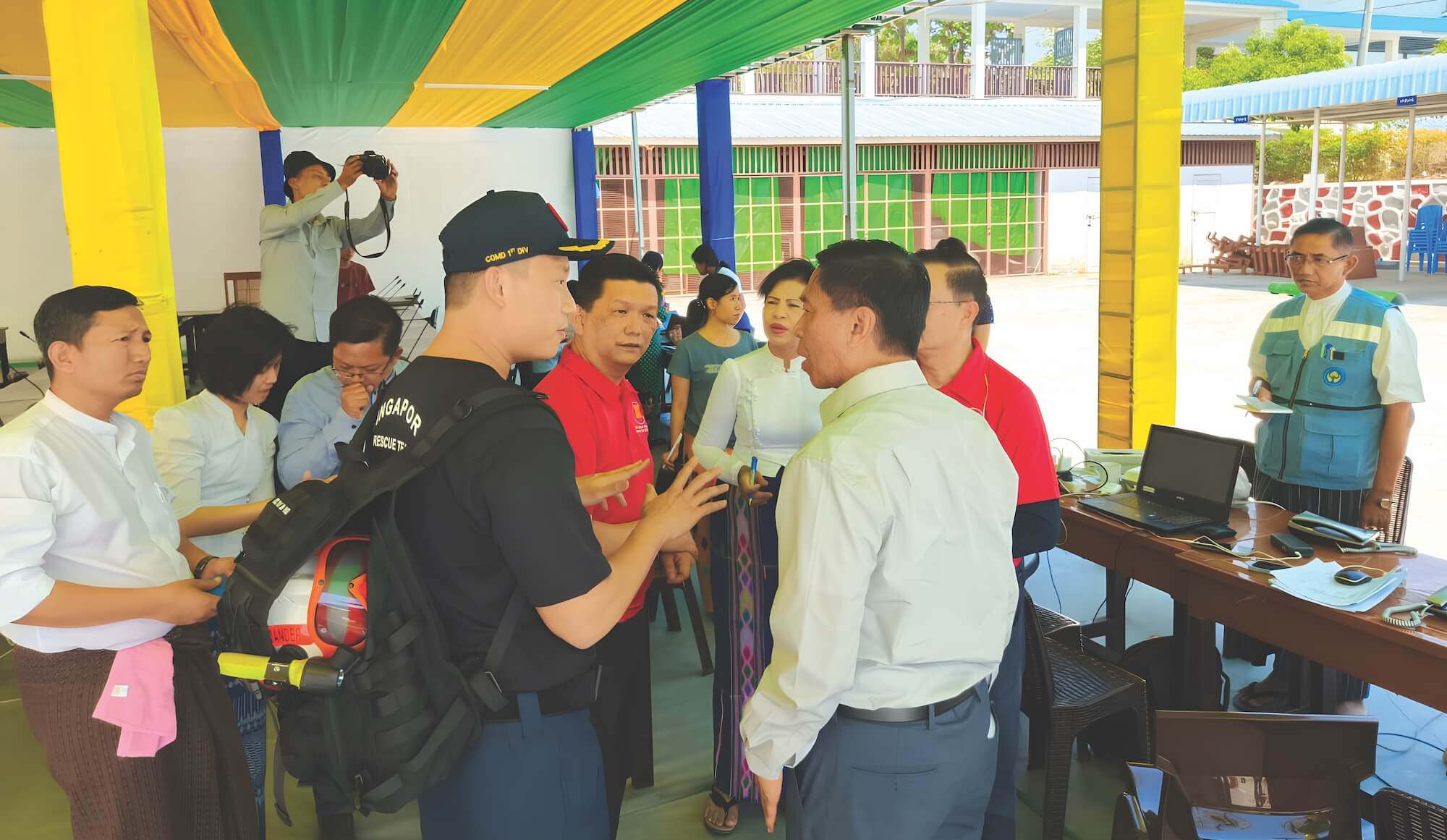




When the ASEAN Leaders signed the ASEAN Agreement on Disaster Management and Emergency Response (AADMER) in 2005, few could have foreseen how central it would become to our regional identity. Two decades on, the agreement remains relevant and is a key driving factor in the formulation of strategies and policies in ASEAN. It has given us a shared framework and, perhaps most importantly, a sense of solidarity amongst the ASEAN Member States in the face of adversity.
Since the establishment of the ASEAN Coordinating Centre for Humanitarian Assistance on disaster management (AHA Centre) in 2011 as the “operational engine” of AADMER, ASEAN has transformed the way it manages disasters. What started as a coordinating body focused on emergency responses has evolved into a hub of knowledge in disaster management, capacity-building, and rapid response. In an era when disasters are growing in scale and complexity, this transformation has also been both necessary and timely.
The AHA Centre’s core mandate is to facilitate and coordinate ASEAN’s collective response to disasters through the implementation and guidance of AADMER. It was translated into the four core functions, namely coordination, disaster information management, resource management, as well as knowledge and outreach. These laid the foundation for ASEAN’s regional capacity as it exists today.
Yet the AHA Centre’s role continues to expand. Today, the AHA Centre is as much about anticipation as it is about preparedness. The Centre integrates climate projections, harnesses artificial intelligence (AI) to mitigate the effects of disasters and provide early warning, and works with partners to bolster ASEAN’s resilience long before disasters strike. These advancements reflect lessons learned from each major response. From the 2013 Typhoon Haiyan in the Philippines to regional coordination during the COVID-19 pandemic at its height in 2020-2021, we have seen the AHA Centre’s regional posture advancing from operational coordination to thought leadership in disaster management.
The AADMER framework and ASEAN’s model of cooperation in disaster management remain unique to the region. Each Member State contributes distinct strengths that collectively enhance the region’s capacity to respond to disasters. To cite a few examples, the Philippines’ tremendous experience in persevering through countless natural disasters brings expertise and knowledge in managing crises, Singapore’s advances in information and communications technology propel ASEAN’s innovation in disaster management, and Malaysia hosts one of the global humanitarian support hubs, facilitating logistical and supply chain solutions in one of the most vulnerable regions to disasters. The true strength of AADMER and the AHA Centre lies in harnessing this diversity and transforming it into a comprehensive and cohesive regional response.

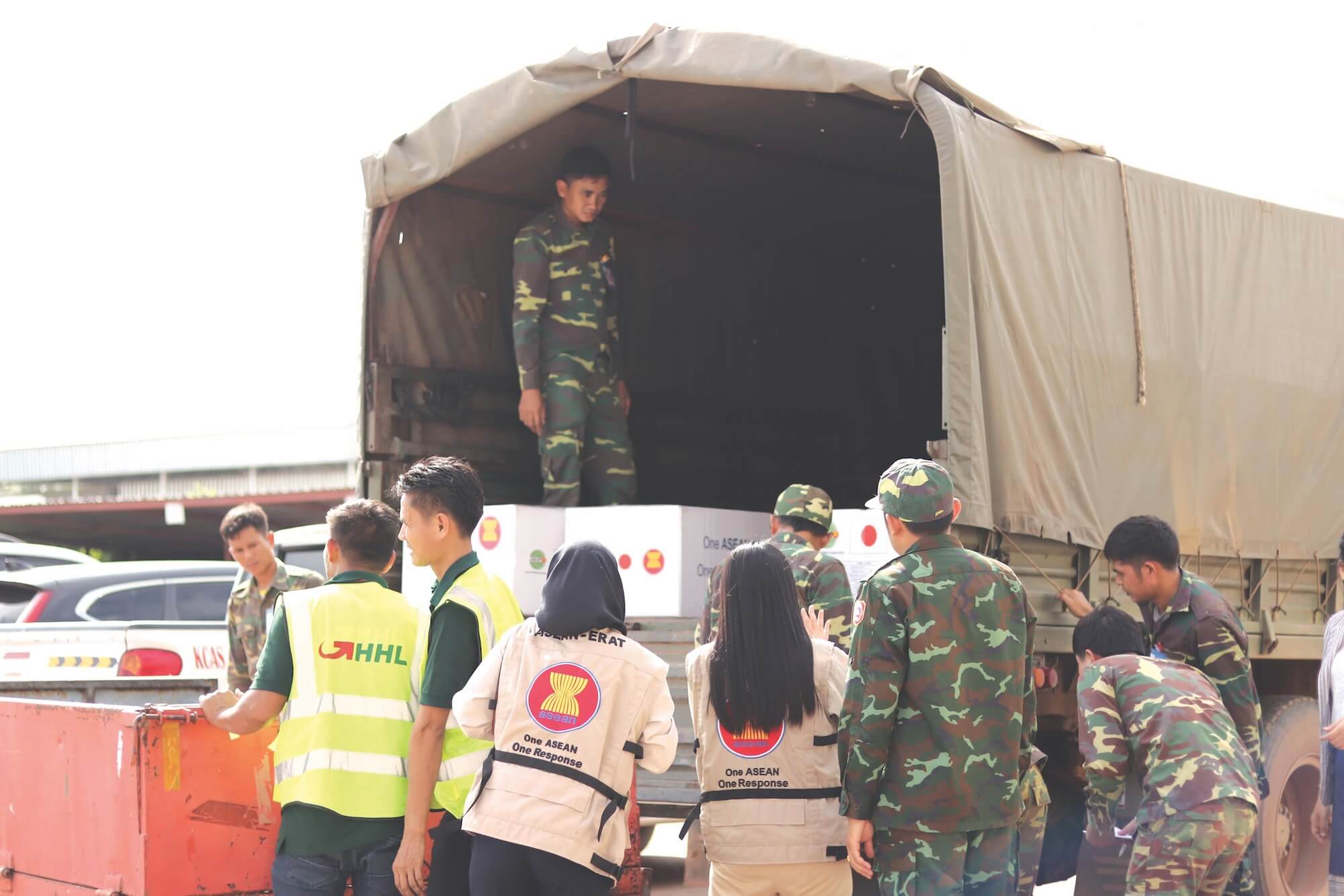
The One ASEAN, One Response Declaration, adopted in 2016, captured this spirit of solidarity. The most recent display of this principle was evident in the aftermath of the M7.7 Mandalay Earthquake in Myanmar, back in March 2025. For the first time in ASEAN history, ASEAN Emergency Response and Assessment Team (ASEAN-ERAT) Members from all 10 Member States were deployed together, and Urban Search and Rescue (USAR) teams as well as Emergency Medical Teams (EMTs) from the ASEAN Member States, pooled their expertise to support the affected communities. Similarly, ASEAN relief items from the Disaster Emergency Logistics System for ASEAN (DELSA) stockpiles, strategically located in Malaysia, the Philippines, and Thailand, and contributed by ASEAN’s partners including Dialogue Partners, National Red Cross Societies, the private sector and ASEAN-based civil society organisations (CSOs), allow ASEAN to deliver needs-based aid rapidly and effectively, turning pooled resources into real-world impact. This is what “collective response” looks like: national strengths amplified at the regional level, ensuring that no Member State needlessly faces disasters alone.
ASEAN’s journey in implementing AADMER offers several lessons to the global disaster management community.
First, a legally-binding regional agreement matters. The AADMER commits all Member States to shared standards and obligations, ensuring a collective response whenever disaster strikes. Serving as the regional policy backbone, the AADMER binds all Member States to contribute to ASEAN’s collective coping capacity and resilience-building agenda. Unique among disaster management frameworks worldwide, the AADMER is the only legally binding agreement supported by a five-year Work Programme (2010- 2015, 2016-2020, 2021-2025, and the upcoming work programme 2026-2030) which operationalises its provisions through measurable priorities, targets, and activities. This mechanism not only keeps implementation on track but also provides a structured basis for monitoring, evaluation, and accountability. Through this spirit of solidarity, ASEAN arrives first in the affected country to provide timely apolitical assistance based on needs, making certain that no Member State is left behind in times of crisis, whilst upholding and respecting the ASEAN Charter’s principles of non-interference, national sovereignty, and territorial integrity.
Second, ASEAN’s ability and agility to repurpose disaster management mechanisms outside of disasters caused by natural hazards, notably during the COVID-19 pandemic by mobilising medical supplies through DELSA, illustrates the flexibility required in today’s multi-faceted and compounding risks landscape. This adaptability was also demonstrated in the comprehensive needs assessment conducted in Rakhine State to support displaced persons in the area. Likewise, under the mandate of the ASEAN Leaders’ Five-Point Consensus, the AHA Centre undertook a humanitarian needs assessment and provision of humanitarian assistance in Myanmar. Both activities reflect ASEAN’s ability to adapt and adjust to the dynamic situation.
The experiences of recent cyclones highlight how anticipatory action must be at the heart of ASEAN’s disaster management. When Tropical Cyclone Mocha struck Myanmar in 2023, early forecasts generated by the affected Member States as well as by the AHA Centre through the Disaster Monitoring and Response System (DMRS) and information harvested from partners enabled authorities to take timely preventive measures, including the evacuation and relocation of coastal communities—actions that significantly reduced casualties. Just a year later, Tropical Cyclone Yagi swept across the Philippines, Viet Nam, Lao PDR, Thailand, and Myanmar, underscoring that disasters today are not only more frequent and severe but also transboundary in nature. These back-to-back crises demonstrate the urgency for ASEAN to move further upstream— beyond response alone—towards robust prevention, mitigation, and anticipatory action under AADMER, ensuring the region is prepared to confront risks before they escalate into full-scale crises.
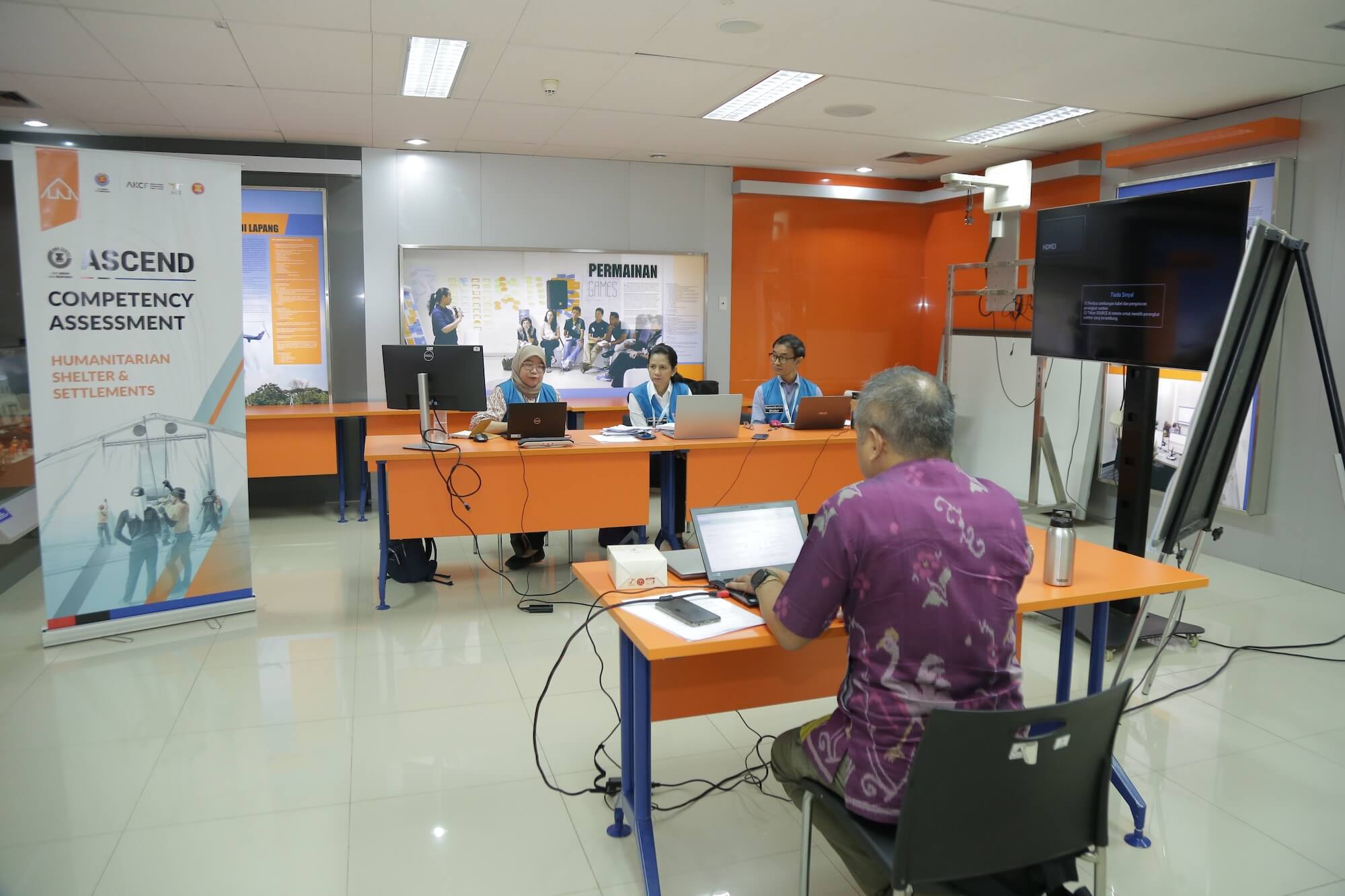
These are lived experiences, forged in the aftermath of untold numbers of tropical cyclones, earthquakes, and crises that tested our unity and resolve. As we look ahead, we must be honest: the challenges are intensifying. Climate change is amplifying the frequency and severity of disasters. The AHA Centre has been recording disaster incidents since its establishment through our ASEAN Disaster Information Network (ADINet), which demonstrates an increasing trend over the years, with an average of more than 1,200 disasters annually and suggests no respite in the foreseeable future. Moreover, humanitarian crises are becoming more complex, with natural hazards becoming more transboundary in nature and often compounded by and intersecting with health and other sectors.
The AHA Centre’s strategic vision beyond 2025 reflects this reality. Nowadays, the Centre commits to mainstreaming climate resilience into disaster management, so the region is better prepared for more complex disasters. Some initiatives have been implemented by the AHA Centre to address this challenge, focusing increasingly on upstream resilience whilst maintaining capacities in downstream relief. One of the examples is through the implementation of the ASEAN Protection, Resilience, and Inclusion for Multi-Hazard Emergencies (ASEAN-PRIME) project, which aims to enhance capacities in providing gender-responsive humanitarian assistance and respond to new complex transboundary disasters with the support of the Government of Canada.
Additionally, expanding partnerships with governments, the UN agencies, Red Cross Societies, ASEAN-based CSOs, and the private sector to strengthen coordination and collaboration across sectors and borders is also crucial to address emerging risks and challenges.
The AHA Centre also envisions the importance of investing in human capital through initiatives such as the ASEAN Standards and Certification for Experts in Disaster Management (ASCEND) initiative, which certifies ASEAN’s disaster management professionals to global standards. ASEAN’s disaster management approach has also evolved. While the earlier focus was primarily on strengthening NDMOs, the emphasis today is increasingly people-centred, ensuring that communities and individuals remain at the heart of resilience-building efforts. This shift is further reflected in embedding mental health and psychosocial support (MHPSS) in responses, recognising that disaster resilience entails not only physical considerations but also the emotional and psychosocial aspects as well.
The 20th anniversary of the AADMER this year is not just a milestone that is uttered; it is a tangible reminder of what regional cooperation can achieve—what has been demonstrated by ASEAN. From its modest beginnings, the AHA Centre has grown into a trusted institution with global repute that embodies the principle of One ASEAN, One Response.
But it is not only about the institution— lest we forget, it is about the ASEAN people and the ASEAN Community. At the heart of all that is said and done, it is about the communities that rebuild stronger after each calamity. And it is also about partners who continue to invest in and support ASEAN’s collective vision of resilience.
Looking forward to 2045, ASEAN envisions a disaster management system that is more anticipatory, people-centred, and globally engaged. The future of AADMER, particularly with the newly developed AADMER Work Programme 2026-2030, will build on its unique role as the world’s only legally binding regional disaster management framework with five-year work plans, while expanding its scope to address complex and transboundary risks. Guided by the vision of One ASEAN, One Response Beyond the Region, ASEAN also aims not only to strengthen collective resilience at “home” but also to contribute to humanitarian action globally, showcasing ASEAN solidarity and leadership on the world stage.
The road ahead will not be easy. Yet, the past 20 years of AADMER have taught us that ASEAN’s resilience lies not only in its mechanisms, but in its unity. Together, we can face the uncertainties of tomorrow with confidence, solidarity, and hope for a better future.




